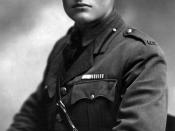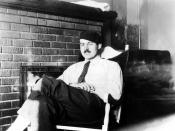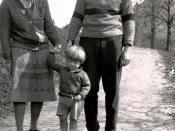In The Sun Also Rises, Ernest Hemingway reveals the disillusionment, immorality, and hedonistic attitudes of the members of the post World War One Lost Generation. Disillusionment is shown by characters through their search for fulfillment. Secondly, immorality is expressed through a select few people who seem to have difficulty in making moral decisions. Lastly, all of the members carry a hedonistic attitude in which their priorities are backwards.
Hemingway writes this novel to explain what he encountered during his travel to Europe in 1925. The characters are models of real people that Hemingway spent time with in Europe and he writes of them as "disillusioned, spiritually numb American expatriates." (Bailey and Kennedy 763) Because of Hemingway's detailed writings on his observance of these people, critic Sibbie O'Sullivan perceives The Sun Also Rises as "a modern-day courtesy book on how to behave in the waste land Europe had become after the Great War."
(Ciccarelli, et al. 324) Disillusionment is a main characteristic in those of who were parts of the Lost Generation. Hemingway, a member of the Lost Generation, realizes the disillusionment of the people in Europe when he visits there in 1925. Along with other authors such as F. Scott Fitzgerald, Thornton Wilder, and Hart Crane, Ernest Hemingway left the United States to go to Europe to work as a newspaper or magazine writer, as well as take advantage of the exchange rate. These authors and other expatriates became known as the Lost Generation during the 1920s and 1930s. The disillusionment of these people of the Lost Generation was caused because they were in constant search of fulfillment and happiness, although most never achieve either. Couples couldn't keep steady relationships, and individuals had difficulty making decisions to make themselves happy.
American expatriates in the novel such as Jake Barnes,


